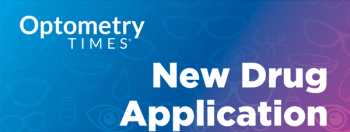
Study: Abnormal ophthalmologic findings in pediatric and adolescent patients
Awareness of visual impairment in clinical practice is suboptimal, and adherence to ophthalmologic evaluation needs to be improved. The prospective cohort study in the Netherlands included 170 children aged 0 to 18 years with a newly diagnosed brain tumor.
Investigators reported identifying abnormal ophthalmologic findings in 78.8% of patients with a brain tumor and advised an ophthalmologic evaluation at the time of diagnosis to detect early vision loss.1
Myrthe Nuijts, MD, of the Department of Ophthalmology, University Medical Center Utrecht, Utrecht, the Netherlands, and colleagues in this multicenter Dutch study, said, “Ophthalmologic evaluation at diagnosis enables early detection of vision loss, decision-making about treatment, and when applicable, the timely use of visual interventions.”
However, they pointed out, awareness of visual impairment in clinical practice is suboptimal, and adherence to ophthalmologic evaluation needs to be improved.
They conducted a prospective cohort study in 4 centers in the Netherlands that included 170 children aged 0 to 18 years with a newly diagnosed brain tumor between May 15, 2019, and August 11, 2021.
The patients underwent a standardized and comprehensive ophthalmologic examination, including orthoptic evaluation, visual acuity (VA) and visual field evaluations, and ophthalmoscopy within 4 weeks after the brain tumor was diagnosed.
The main outcome measures were the prevalence and types of visual symptoms and abnormal ophthalmologic findings at the time of tumor diagnosis.
Results of ophthalmologic analysis
Of the study patients, 96 were boys (median age, 8.3 years; range, 0.2-17.8 years).
The tumor locations were infratentorial in 82 (48.2%) patients; supratentorial midline in 53 (31.2%); and cerebral hemispheric in 35 (20.6%).
Orthoptic evaluations were conducted in 161 patients (94.7%) underwent orthoptic evaluation (preoperatively in 67, 41.6%; postoperatively in 94, 58.4%).
The VA was tested in 152 (89.4%) patients (preoperatively in 63, 41.4%; postoperatively in 89, 58.6%).
Visual fields were measured in 121 (71.2%) patients (preoperatively in 49, 40.4%; postoperatively in 72 59.6%).
Ophthalmoscopy was performed in 164 (96.5%) patients, preoperatively in 82, 50.0%; postoperatively in 82, 50.0%).
The analysis showed that 101 youths (59.4%) had visual symptoms at tumor diagnosis. Abnormal ophthalmologic findings were identified in 134 patients (78.8%) during the eye examinations.
The most common abnormalities were papilledema in 86 of 164 patients (52.4%) who underwent ophthalmoscopy, gaze deficits in 54 of 161 (33.5%) who underwent orthoptic evaluation, visual field defects in 32 of 114 (28.1%) with reliable visual field examination, nystagmus in 40 (24.8%) and strabismus in 32 (19.9%) of 161 who underwent orthoptic evaluation, and decreased VA in 13 of 152 (8.6%) with reliable VA testing. Forty-five of 69 patients (65.2%) who did not have visual symptoms at the time of tumor diagnosis had ophthalmologic abnormalities on examination, the investigators reported.
“The results suggest that there is a high prevalence of abnormal ophthalmologic findings in youths at brain tumor diagnosis regardless of the presence of visual symptoms. These findings support the need for standardized ophthalmologic examination and the awareness of ophthalmologists and referring oncologists, neurologists, and neurosurgeons for ophthalmologic abnormalities in this patient group,” Dr. Nuijts and colleagues concluded.
Reference
1. Nuijts MA, Stegman I, van Seeters T, et al. Ophthalmological findings in youths with a newly diagnosed brain tumor. JAMA Ophthalmol. Published online September 15, 2022. doi:10.1001/jamaophthalmol.2022.3628
Newsletter
Want more insights like this? Subscribe to Optometry Times and get clinical pearls and practice tips delivered straight to your inbox.



















































.png)


